What is a Quartz Watch? How do they work?
A revolutionnary invention
What is a quartz watch? Timing precision has never been the same since quartz watches were invented.
The first quartz wristwatch was launched to the market in December 1969 by the renowned Japanese brand Seiko. But how does it work? How can this crystalline mineral of silica make a watch tick with incredible accuracy?
Let's start from the beginning.
Electricity
As soon as they could, which was at the beginning of the nineteenth century, watchmakers worked on using electricity to power watches. They wanted to use this new, more regular, controllable energy.
As we've discussed, to display time, the challenge is to transform a flow of energy into impulses. The path to doing this in electric watches started with the first electric clocks. The goal of clocks was to control the movement of the pendulum. To do so, a piece of soft iron, a very pure iron with particular magnetic properties, was positioned at the end of the pendulum. Underneath, an electromagnet controls its motion by providing regular electrical pulses.
Later, it appeared as though the shape of a tuning fork was optimal thanks to the sturdiness of its system of fixation at one unique point. The vibrations could then be used to regulate a gear train directly or to give the suitable pulses to a microprocessor. The tuning fork shape turned out to be the right one, which remains the norm today.
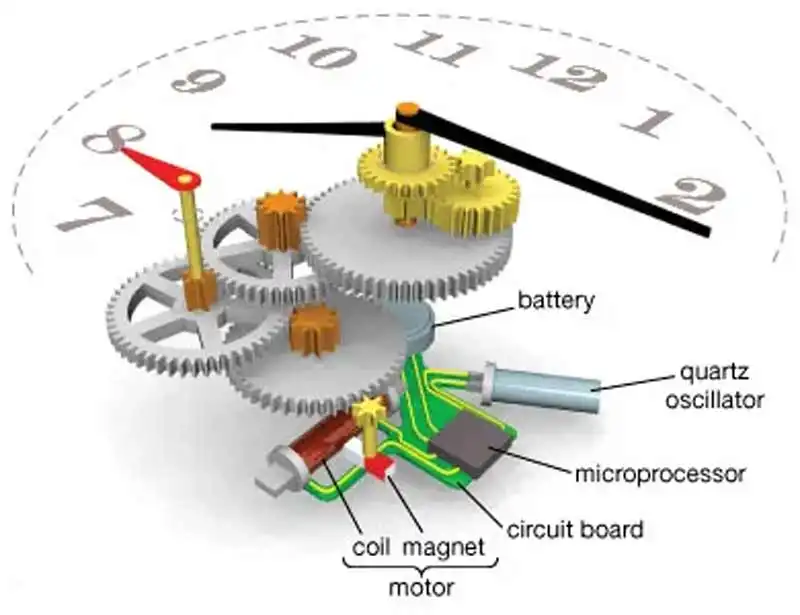
Quartz
Quartz is a hard mineral composed of silica and oxygen. It also has a special place in the world of watches since it has been used to run electronic calibers for over fifty years: quartz is not only an excellent, shiny stone to decorate the living room table. It has the very particular physical property of being piezoelec tric. This unusual word means the crystal extends or retracts when an electrical current goes through it. The phenomenon goes in the other direction: push, extend, or twist a piece of quartz, and one side becomes positively charged while the other becomes negatively charged.
This motion can be swift, so fast that you can have thousands in a single second to create the desired vibration. At this point, you have to remember that, to measure time, you must transform linear energy into impulses. And again, the more you can divide the period of time, the more precise it becomes. Quartz is an excellent ally of precision because its vibrations are stable and uniform once electricity passes through it. This is why engineers and watchmakers worked hard starting at the beginning of the twentieth century to make quartz a part of watch movements, and they were successful.
So, how do you convert the 32,768 Hz vibrations of a tiny piece of crystal into a time display? By using a frequency divider circuit. This system commutes the vibrations into impulses sent to a small electric motor, which powers the hands. On digital displays, the impulses directly activate the segments of the screen.
How quartz watch work?
Quartz clocks and watches operate using a fascinating blend of physics and electronics. Unlike mechanical watches, which rely on gears and springs, quartz timepieces require a battery to function. This battery powers a small electronic circuit that sends electricity to a quartz crystal oscillator.
The quartz crystal, typically shaped like a tiny tuning fork, vibrates at a precise frequency when exposed to an electrical charge. This phenomenon was first studied in depth by physicist Pierre Curie, who discovered that quartz could generate an electric signal when compressed—a property known as piezoelectricity.
In a quartz clock or watch, the crystal oscillates exactly 32,768 times per second. These vibrations are counted by the circuit and converted into regular pulses, which control the movement of the watch hands. This process explains how quartz clocks and watches maintain such consistent timekeeping.
The watch battery is essential to this system. It provides the energy needed to keep the quartz crystal vibrating and the electric signal flowing. During the 1970s, the rise of quartz technology led to the quartz crisis, a period when traditional mechanical watchmakers faced major disruption due to the affordability and accuracy of quartz models.
Today, quartz clocks and watches remain popular for their reliability and low maintenance. Whether powered by a watch battery or solar cell, they demonstrate how watches work using principles of physics and engineering. The quartz crystal oscillator continues to be a cornerstone of modern timekeeping.
Analog quartz
Focusing on tradition mixed with computing, watch brands have developed exciting and creative products combining analog time displays and screens for additional information. They are measuring gravity. Pressure, temperature, depth, distance, and even displaying compass directions, this world seems limitless as appropriate sensors have been developed to fit into a watch and provide accurate data.
Casio might be one good example of a brand inventing creative functionalities using quartz technology. Despite not being a Swiss quartz watch brand, the Casio "G-Shock" collection contains analog models with various unusual functions displayed on a screen. Launched in 1983, the collection offers three core elements: resistance to shock from a fall of 10 meters, water resistance to 10 bar, and a 10-year battery life.
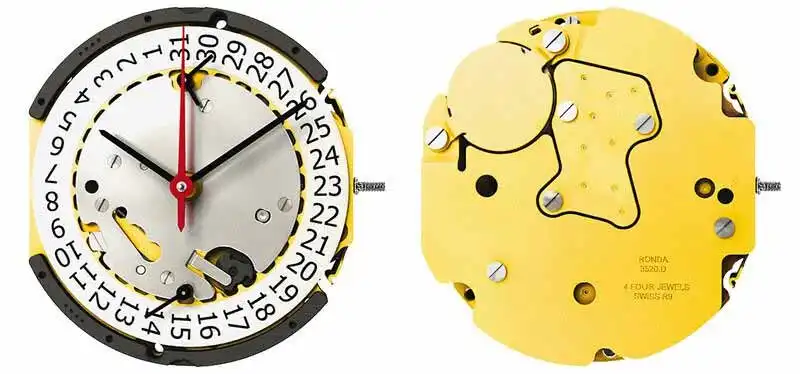
Mecaquartz
Some brands have cleverly decided to merge quartz technology with traditional fine mechanics to take advantage of the first's precision and the second's prestige. The concept is simple, but realizing it is pretty hard: energy is provided mechanically thanks to a spring barrel connecting to an automatic winding system. Quartz watches were born.
A generator converts the energy into electric power and transmits it to a quartz regulator, as in any quartz movement. The regulator activates micro motors that drive the hands. But the power can also animate complications built in a traditional mechanical way. The automatic modules make Such calibers more significant than usual quartz movements.
The Japanese brand Seiko has created a whole collection named Kinetic using this kind of functional architecture.
Tactile quartz
With tactile quartz models, the case and/or the crystal can be used to control functions. Omega and Rado have had watches in their collections with contact-sensitive cases. Their Swatch Group sister brand Tissot, in particular, took advantage of quartz and microelectronic engineering to create the "T-Touch" in 1999. Its crystal is actually sensitive to tactile pressure. Since its launch, the "T-Touch" has come out in many versions dedicated to various environments and sports such as diving and alpine activities.
Rarities
Sometimes engineers appreciate pushing quartz and microelectronic science to its limits to invent extremely high-tech watches. Pretty rare and expensive, these models have been designed to offer outstanding functions. Here are three examples of such rarities.
Breitling has a long history in aeronautics, which is why in 1988, the brand launched a Swiss quartz watch containing a miniaturized emergency radio transmitter able to broadcast on civil aviation's distress frequency of 121.5 MHz. Appropriately named Emergency, the second version of this watch launched in 2013 emits a secondary signal at 406.04 MHz
monitored by satellites. In 1990, Junghans's engineers implemented a radio-controlled system in a watch to catch the signal from Frankfurt's atomic clock. Called the "Mega 1," its antenna is integrated into the strap.
And what if you desired the sun to provide you with the time? Citizen has indirectly managed this with its Eco-Drive system, first presented in 1995. Thanks to a unique dial able to absorb light and transform it into electrical current, Eco-Drive quartz watches no longer need batteries. Any light source, natural or not, is enough to fill the bill.
Today, Japanese and Swiss quartz watches are amongst the most popular worldwide. This may change in due course with the recent development of smartwatches.
Discover the quartz references from Wryst:
Swiss Quartz Chronograph Watches Force
Quartz Racing Sports Watches Motors
Swiss Quartz sports watches Wryst Elements
Chronograph Swiss Quartz Watches Wryst Force
More on the quartz watch crisis on Wikipedia

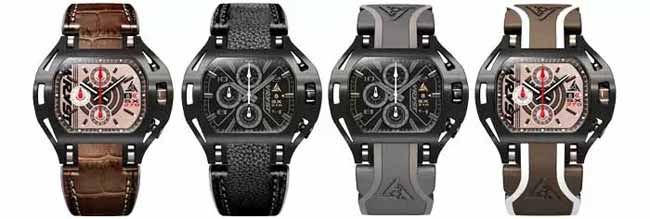
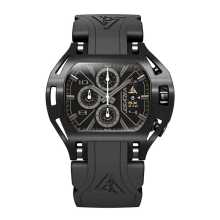

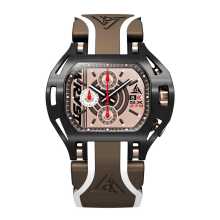
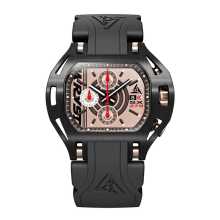
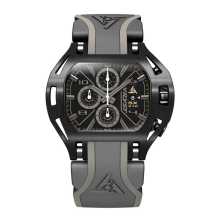
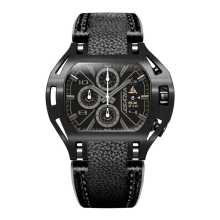
By Daniel 15.05.2025 22:54:20
Very clear details about the genius behind the quartz watch. But I wish I knew who invented it first. It could be Swatch.
By Jonathan 05.08.2024 16:24:16
I was not expecting to find out details about how a quartz movement works directly on a watch brand page. This could have been a great topic for a forum or a blog dedicated to watches and more specifically watch movements. Anyway, I found what I was looking for "A generator converts the energy into electric power and transmits it to a quartz regulator". Thanks
By Paul 24.09.2023 10:09:45
Instructive post that explains a little more how quartz makes watches tick. But you could be more thorough. The link at the bottom for example gives much more details.